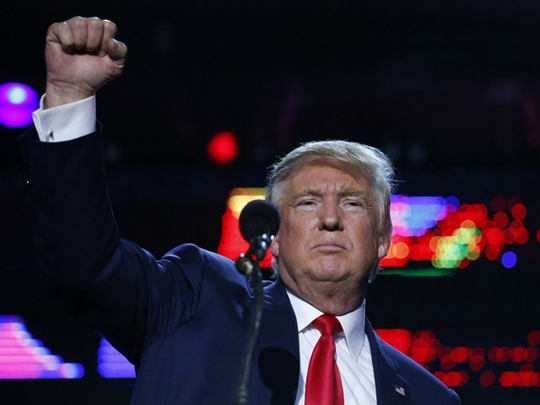Washington, Dec 20: Donald Trump on Monday cruised through the final vote of the Electoral College to formally become US President-elect.

America`s Electoral College confirmed as expected Trump`s election as the 45th president of the United States.
Six weeks after his upset victory over the Democrat Hillary Clinton, Trump sailed past the 270 votes needed to make his victory official, clearing the way for him to succeed Barack Obama on January 20.
An effort by anti-Trump forces to persuade Republican electors to abandon the President-elect came to practically nothing and the process unfolded largely according to its traditions.
Trump's polarising victory November 8 and the fact Clinton had won the national popular vote had stirred an intense lobbying effort, but to no avail.
Even one of Trump's fiercest Republican rivals, Ohio Governor John Kasich, said it was time to get behind the President-elect.
"We want unity, we want love," Kasich said as Ohio's electors voted to back Trump at a statehouse ceremony, as per AP.
With Hawaii still to vote, Trump had 304 votes and Clinton had 224. It takes 270 Electoral College votes to win the presidency. Texas put Trump over the top, despite two Republican electors casting protest votes.
One voted for Kasich, the Ohio governor, the other voted for former Texas Representative Ron Paul.
Clinton lost four electors in Washington state three voted for former Secretary of State Colin Powell and one voted for Native American tribal leader Faith Spotted Eagle.
Several Democratic electors in other states tried to vote for protest candidates but they either changed their votes to Clinton or were replaced.
Meanwhile, after the result came in, Trump said, "I thank the American people for their overwhelming vote to elect me as their next president of the United States," as per AFP.
"With this historic step we can look forward to the bright future ahead. I will work hard to unite our country and be the president of all Americans," he pledged.
The Electoral College has 538 members, with the number allocated to each state based on how many representatives it has in the House plus one for each senator.
The District of Columbia gets three, despite the fact that the home to Congress has no vote in Congress.




Comments
Add new comment